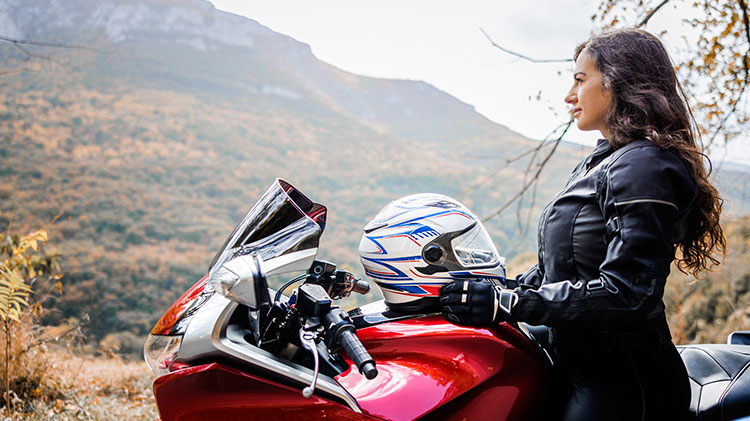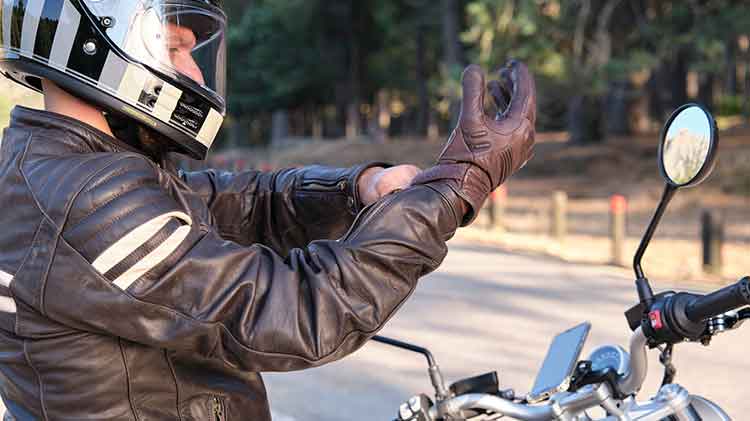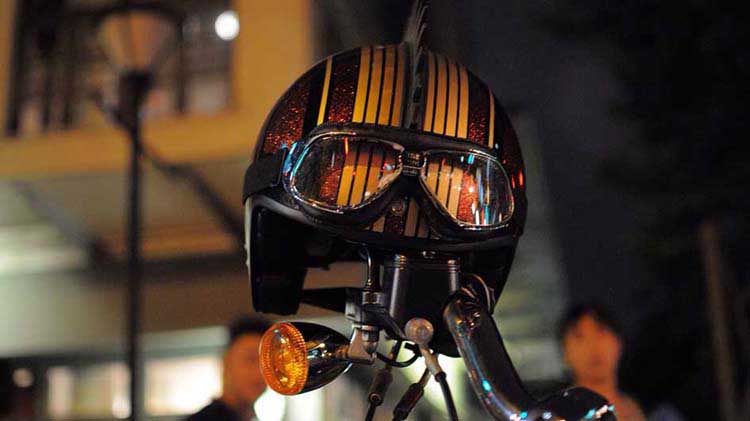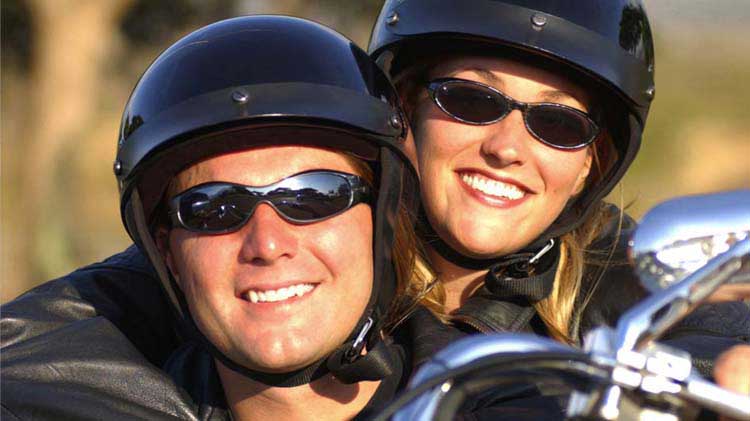Choosing a motorcycle helmet
We know that motorcycle helmets are helpful, but how can you choose the right one?
Most commonly, the first accessory motorcycle riders buy is a helmet. The safety value of a motorcycle helmet makes it a key piece of motorcycle riding gear.
Motorcycle helmets are not just about protection. They also can shield you when riding in bad weather, protect against road debris and help reduce some of the noise pollution. Built differently than dirt bike helmets, they are designed to help reduce hearing loss and focus on what’s important — your ride.
Over the years, new technology and research data has led to significant changes in motorcycle helmets so you may find a number of motorcycle helmet buying guides available to help.
Here are several questions and ideas to consider as you try to answer the question: How do I choose a motorcycle helmet? – and find one that is best for you.
What should you look for in a motorcycle helmet?
Finding a helmet isn’t only about picking a style you like, matching the color to your motorcycle or finding the best price. It’s about buying a helmet that fits properly so it can protect you at the level it’s designed for in a crash. Also, a helmet that doesn’t fit properly or is uncomfortable to wear may lead to unnecessary distractions while riding.
Have an agent contact me
with a quote
When picking out a helmet, you also have to consider the style that has the right safety features for you and your motorcycle-riding experience.
Motorcycle helmet types
While full-face helmets provide the most protection, there are other motorcycle helmet types.
- Full face helmet – Enclosing the rider’s head, full-face helmets help protect the nose, eyes and chin. They are also the quietest but provide minimum air flow.
- Modular helmet – Unlike the full-face helmet, the modular helmet includes a hinge to swing the chin bar out of the way.
- Dual sport helmet – These helmets are designed for riders that move from street to off-road riding. They offer the protection of a face shield but also the “peak” of a dirt bike helmet to allow for ventilation and compatibility with goggles.
- Open face helmet – Less protective than full or modular helmets, these helmets allow for maximum air flow.
- Half shell helmet – Like open-face helmets, half-shell helmets cover just the top of the head.
Consider the safety, fit and color of the helmet
- Helmet safety ratings – When looking at a potential helmet, make sure it passes the safety standards and requirements. There are several helmet safety certification ratings including DOT (Department of Transportation) and Snell. Helmets that meet these standards should have a sticker indicating the certification rating. A motorcycle helmet with a DOT rating is considered to meet the basic safety standards set by the U.S. Department of Transportation for protection in a crash. Helmets with safety certificate ratings from the Snell Foundation, an independent vehicle safety foundation, may be a little more expensive but have undergone more rigorous testing.
- Fit – Snug-fitting, full-face and modular motorcycle helmets provide the maximum level of safety. When looking at helmets, look at those that match your head shape: long oval, intermediate oval and round oval. You can also use a tape measure to determine the circumference of your head to match the recommended sizes on the helmets. Make sure your helmet is form fitting. You don’t want padding to slide back and forth. If it does, the helmet might be too big. As you wear the helmet, the inner pads will begin to conform and fit your head more comfortably.
As you compare styles, you may wonder: How should a motorcycle half-shell helmet fit? And the answer is snug, just like a full-face helmet. You should be able to shake your head without it moving. No matter which motorcycle helmet style you choose, don’t be afraid to walk around the store wearing your helmet for 15-30 minutes to ensure it will be comfortable.
- Color – Visible colors on your helmet will help other drivers (and riders) see you. A black helmet with a black motorcycle may look appealing but consider how it won’t be instantly visible to drivers.
Other helmet factors to consider
- Ventilation – Good airflow is important, whether you choose a full-face or open-face helmet.
- Removable liners – Riding can be dirty and a helmet with removable liners allows you to replace them when they get dirty from sweat, dirt and the everyday weather.
- Visors – Some helmets come with anti-fog systems to help prevent fog in certain weather.
- Additional safety features – With technology advancing, helmet safety has advanced as well. Some helmets come with “cheek pad systems” to allow for the helmet to be removed easier in the case of a crash. They may also include “Multi-directional Impact Protection Systems (MIPS)” that are designed to reduce rotational forces in a crash.
How long do motorcycle helmets last?
The normal life span of a motorcycle helmet is three to five years with normal wear. Many motorcycle enthusiasts agree that helmets should be replaced at least every five years. As the helmet is used, there is wear and tear that occurs to the components, such as the chin strap and padding. Keep in mind, routinely hanging it by the chin strap can shorten the life of a motorcycle helmet. Also, it’s very important to replace your helmet immediately if it’s been dropped or involved in an accident.
If you ride with a passenger on your motorcycle, consider buying a new motorcycle helmet to have available for them to use. There are some options that offer a more universal fit, so if you ride double with multiple people, that may work. However, if you have a regular passenger, consider getting them their own motorcycle helmet.
Motorcycle helmets provide protection from noise, weather and debris, and most important, offer some crash protection. Helmets are recommended but not required in every state. Check with your state’s DMV to find out the laws in your area. Then, when you are ready to purchase your helmet along with a motorcycle, contact your State Farm® agent for a quote.




